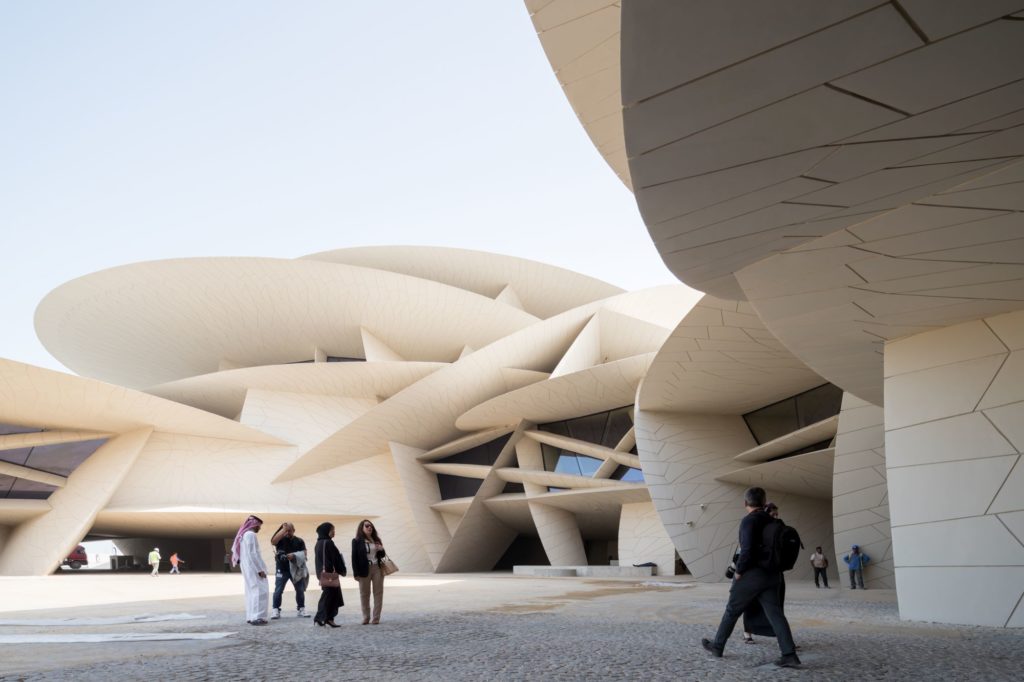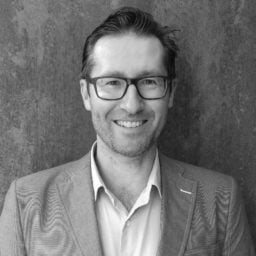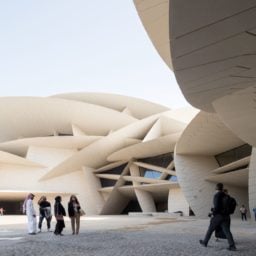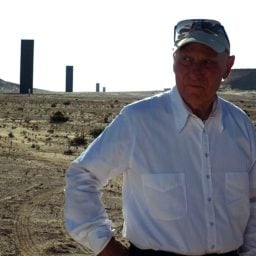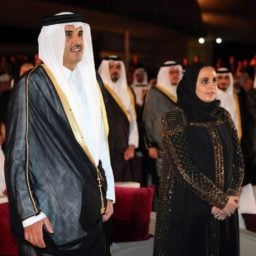No one knows how many masterpieces of Western art Qatar has bought. It is reported to have splashed out billions of dollars on works by blue-chip artists: Picasso, Rothko, Matisse, and Cezanné, plus contemporary must-have names. But if you think that the new Jean Nouvel-designed National Museum of Qatar was built to house them, think again. The kingdom’s trophy art remains under wrap. There isn’t a Rothko in sight.
The US-educated emir’s sister, who has masterminded Qatar’s ambition to build “the Smithsonian in the sand,” holds the secrets of its major art acquisitions. Today’s big reveal in Doha is, instead, a museum that celebrates Qatar’s archaeology, natural history, its people, and the sheikhs who threw off their colonial “protectors” to build a nation. Sheikha al Mayassa bint Hamad bin Khalifa al-Thani, the chair of Qatar Museums, led the way at the press preview yesterday, accompanied by the French architect.
Nouvel, the go-to architect for mega museums that express soft power and a sovereign-wealth fund measured in trillions, has done his royal client proud. The building is an impressive symbol of national pride, although the local story told inside its mile-long progression of galleries may feel anticlimactic in places.
Building a new National Museum on the doorstep of the “old” one was signed off by al Mayassa’s father, the former emir. She then got the project rubber stamped by her older brother, the new emir. The upbeat and patriotic tone gets a royal seal of approval today when the ribbon is cut and non-alcoholic drinks flow.
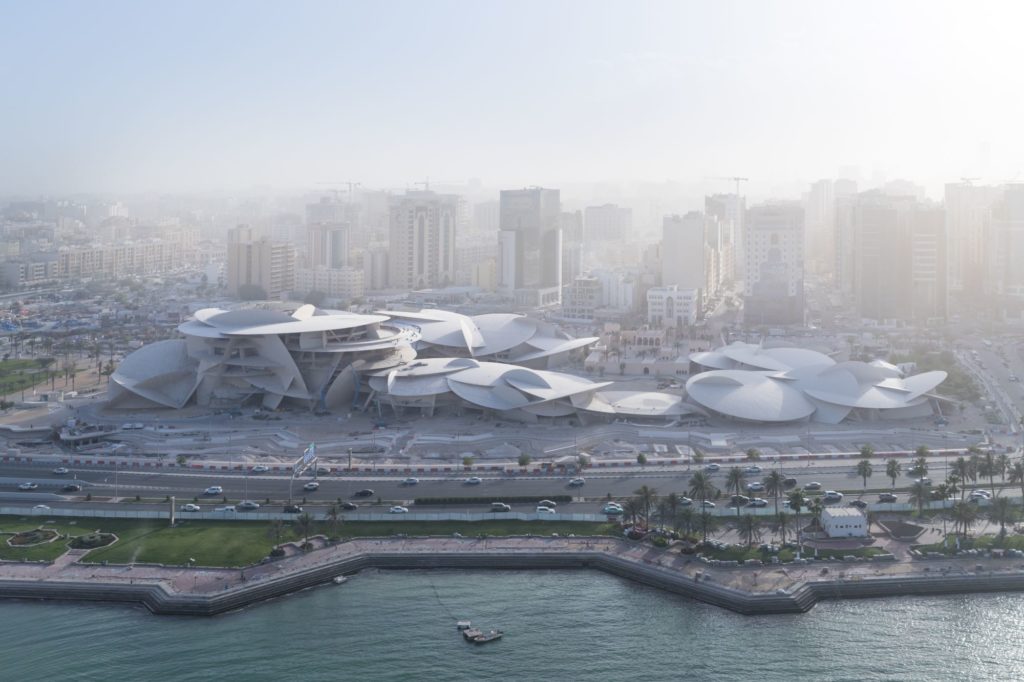
Jean Nouvel’s National Museum of Qatar is a vast new landmark in Doha. Photo by Iwan Baan.
Special guests include a bevy of museum directors, including LACMA’s Michael Govan, the Whitney’s Adam Weinberg, and Mikhail Pitrovsky of the Hermitage. The artist Doug Aitken flew in from Beijing, via LA. Jeff Koons, Olafur Eliasson, and Philippe Parreno are confirmed speakers on an expert panel, while KAWS is said to be on his way. Star architects in town include Rem Koolhaas, whose team in Doha pulled together the inaugural temporary exhibition about the city’s explosive urban growth completed and planned.
When you sit on top of the world’s third-largest reserve of natural gas, plus trillions of barrels of oil, which until fewer than 100 years ago lay undiscovered, you can understand a country’s desire to celebrate the sources of its newfound fortune and build edifices for as far as the eye can see. A crop of new stadia are rising for the 2022 FIFA World Cup, part of a spending initiative that has delayed but not stopped Qatar’s museum production line.
The National Museum, which has been “18 years in gestation,” Nouvel said at the press preview, has gained added political symbolism over the past two years. The building has been completed despite the ongoing blockade of Qatar led by its much bigger, wealthier, and more aggressive neighbor, Saudi Arabia. The boycott is supported by its allies, the United Arab Emirates and Egypt. But it seems to have backfired royally, boosting Qatari pride and the young monarch’s popularity.
Waving the Flag
The mile-long gallery that snakes through the National Museum is due to be completed in the fall with a final display about Qatar today, including the blockade, Sheika al Mayassa said. In the meantime, it is impossible to miss Qatar’s red and white flag flying above the museum’s huge inner courtyard. The flag pole is held aloft by giant bronze hands and brawny arms. Called Flag of Glory (2019), the monumental new sculpture is the work of the Qatari artist Ahmed Al Bahrani. Other patriotic sculptures by Qatari artists are named Motherland and Wisdom of a Nation. For light relief, the French artist Jean-Michel Othoniel has created ALFA (2019). Dozens of black steel beads sprout in an artificial lagoon that every half hour comes alive with more than 100 fountains.
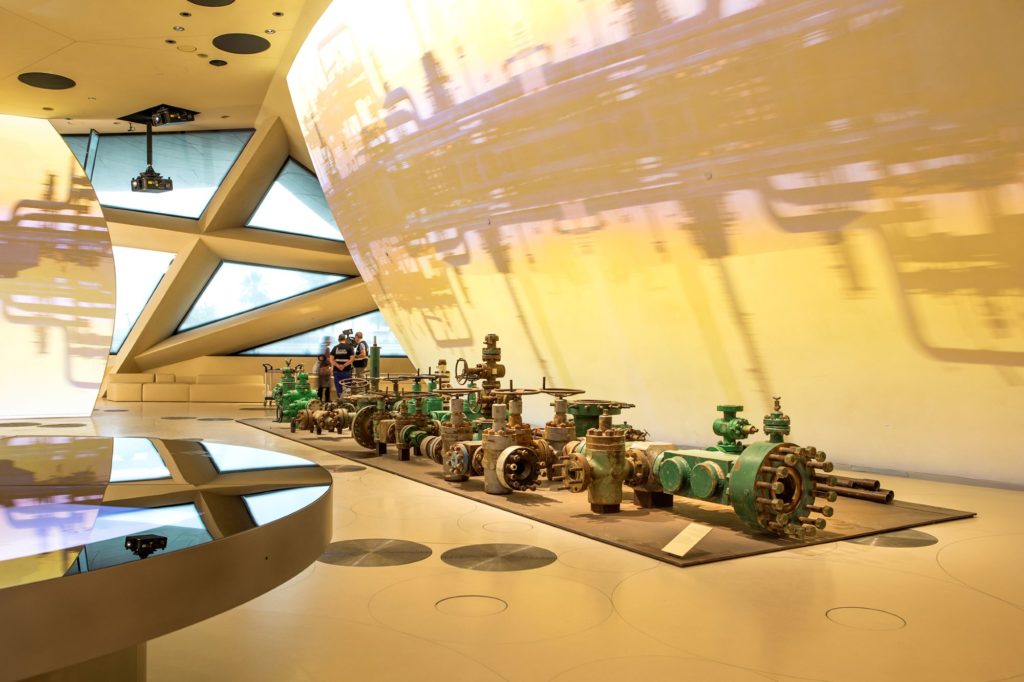
Doug Aitken’s film installation The Coming of Oil (2017) is a highlight of the National Museum of Qatar. Photo by Danica O. Kus.
As a piece of monumental architecture, Nouvel’s National Museum of Qatar ups the ante in the Gulf, a region not known for understated taste in buildings. His megastructure is, in fact, an expansion of the “old” national museum founded in 1975. Housed in a former palace that has been painstakingly restored, the historic structure dates from 1906 when Qatar’s main industry was pearl fishing. Nouvel’s groundscraper of a building takes museum expansion to a whole new level.
Nouvel said he wanted to constantly surprise visitors with his building. He has done that and then some with a structure that is extraordinary inside and out thanks to the more than 500 large and extra-large disks, which he calls “blades” intersecting at idiosyncratic angles. Inspired by the crystal structure of a rock formation known as the desert rose, Nouvel maxed out on complexity but in an elegant way.
Money and materials seem to be no object. The structural steel for the disks weighs more than 1,760 tons. By comparison the giant dome he designed for the Louvre Abu Dhabi needed “only” 7,500 tons (still twice that of the Tour Eiffel). No one is saying officially how much Qatar has spent, but the national museum looks and feels like a billion-dollar building. When asked, the architect refused to compare the two projects. He also shrugged off any issues surrounding working with Saudi Arabia on a leisure and heritage resort. (The deal was announced after the murder of the journalist Jamal Khashoggi, who praised the Qatari media in his final Washington Post op-ed.)
Local History Writ Large
The architect I.M. Pei set the bar high for museum architecture in Qatar and across the region with his Museum of Islamic Art, which opened in 2008. Its galleries are full of artistic treasures from far and wide.
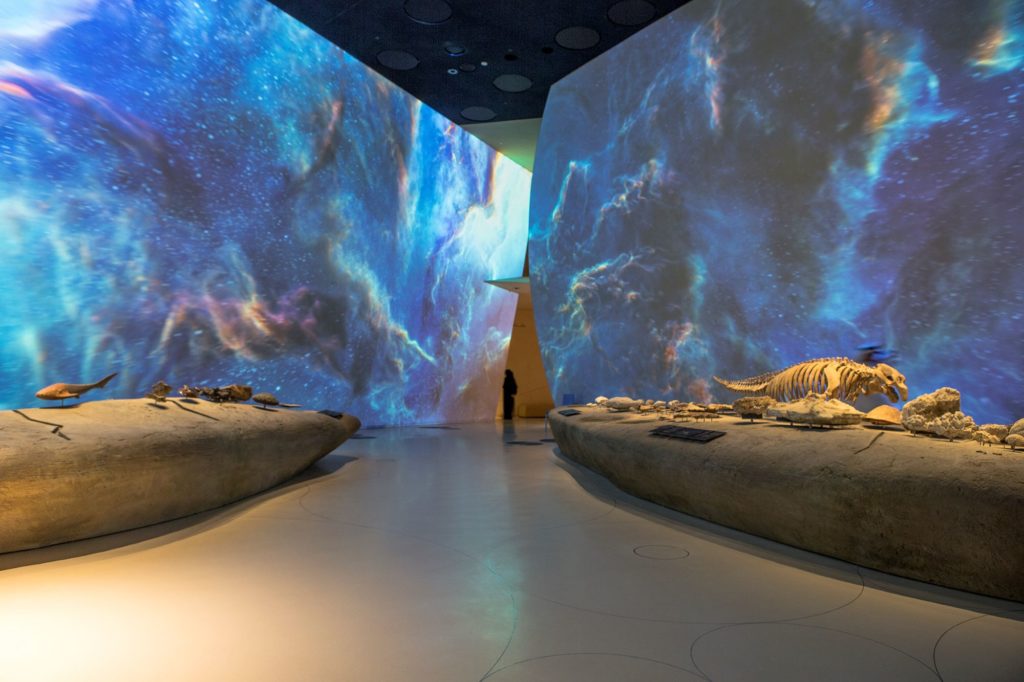
The Formation of the Qatar Peninsular, National Museum of Qatar. Photo by Danica O. Kus.
Nouvel’s National Museum of Qatar fulfills a quite different brief. He has built the world’s largest local history museum. It could have been worthy, dull even, but the curators working with the Doha Film Institute have produce panoramic films that animate hundreds of meters of Nouvel’s walls that slop this way and that. The medium is the message, as the saying goes.
Throughout the museum’s 11 galleries the films that are projected from floor to ceiling are the stars of the show. Called “art films,” they animate hundreds of square meters of the museum’s wall surfaces. Typically impressionistic rather than documentary, sequences depict journeys beneath the sea, above the desert, starting at “The Beginnings” with the creation of the Earth.
Among the art films with a capital “A” are new commissions by Doug Aitken and John Sanborn. Ai Weiwei’s contribution is due arrive shortly. Aitken has created a three-screen installation called The Coming of Oil (2017). As its title suggests, it is about extracting “liquid gold,” beneath the desert. The visuals are seductive: oil refineries at dawn, petroleum with the faintest whiff of global warming. Sanborn’s installation nearby, Alchemy (2019), is a hymn to Qatar’s other non-renewable resource: natural gas, its extraction and transportation around the globe in tankers the size of three soccer pitches. He told artnet News that the call to create a work for the museum came last year out of the blue. “I have become evangelical about Qatar,” he said, fulling supporting the National Museum’s educational mission. The film is the closest many will get to the vast gas drilling rigs 80 miles off the shore of Qatar. The mega structures in the sea are high-security installations.
Most of the actual exhibits are humble objects and small. They range from Bronze age pottery to the portable belongings of nomadic Bedouins who made the desert their home: camel saddles, carpets, and coffee pots. It starts with a geology lesson like many a municipal museum and much is made of a 400 million-year-old fossilized fish. The natural history gallery gives the classic diorama a 21st-century twist: no animals were killed and stuffed, as all the creatures are hyper-realistic models.
A gallery devoted to the natural pearls harvested from the sea feels like a museum within a museum with its vitrines of tiaras and centrepiece, the Persian Carpet of Baroda commissioned by a maharaja and embroidered with 1.5 million pearls along with diamonds, sapphires, emeralds, and rubies.
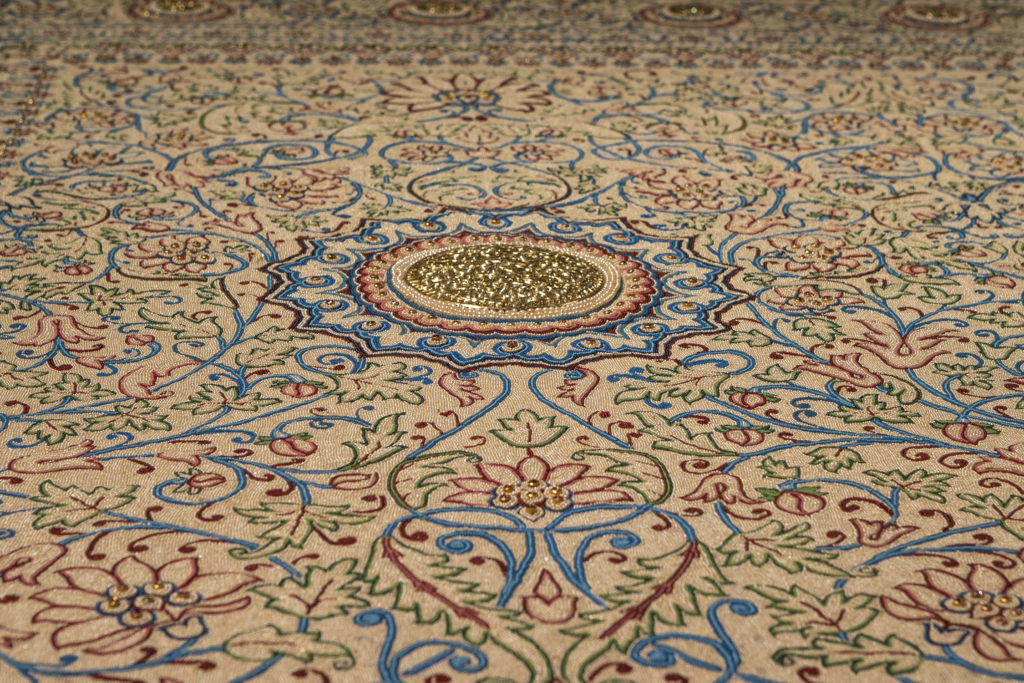
The Carpet of Baroda (detail), which is embroidered with 1.5 million Qatari pearls. National Museum of Qatar. Photo by Danica O. Kus.
On a whistle-stop tour of the galleries, Sheikha al Mayassa stressed that Qatari society “has always depended on women,” adding that “we are very good with our hands.” (Hardly a feminist call to arms, but with twice as many female graduates as men, Qatar is the most advanced and liberal country in the region.) As the galleries become more contemporary fewer ordinary people appear. A succession of sheikhs are portrayed as beloved and benevolent. For the time being the experience of migrant laborers is conspicuously absent from a museum aiming to tell the story of modern Qatar. Overseas workers appear in the documentary photographs in the temporary show about Doha’s construction boom.
While no one wants to talk budgets, the Sheikha was happy to speculate about visitor numbers. She thought that somewhere between the 500,000 visitors the museum of Islamic art claims to get and the one million who use the National Library designed by OMA and Rem Koolhaas is realistic.
Sanborn hopes that he will be commissioned again when Qatar gets around to building a national gallery of Western art to complement Mathaf, the Arab Museum of Modern Art. Sources close to the Sheikha say the flour silos on the Doha waterfront are the most likely home for its Modern and contemporary art. In 2017, the Chile-based architects Elemental, which is led by Pritzker Prize winner Alejandro Aravena, won the international competition to convert it into the vast Art Mill. In the meantime visitors can admire the models of it, the new park that will connect Pei and Nouvel’s landmark buildings besides a dozen other museums that may one day rise out of the desert sand.
